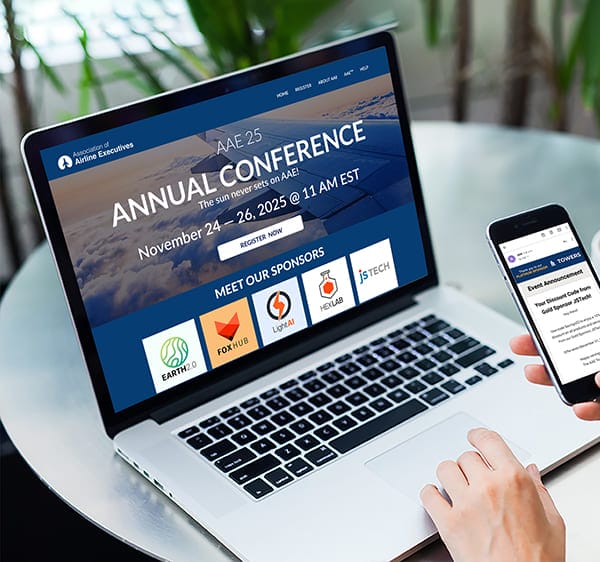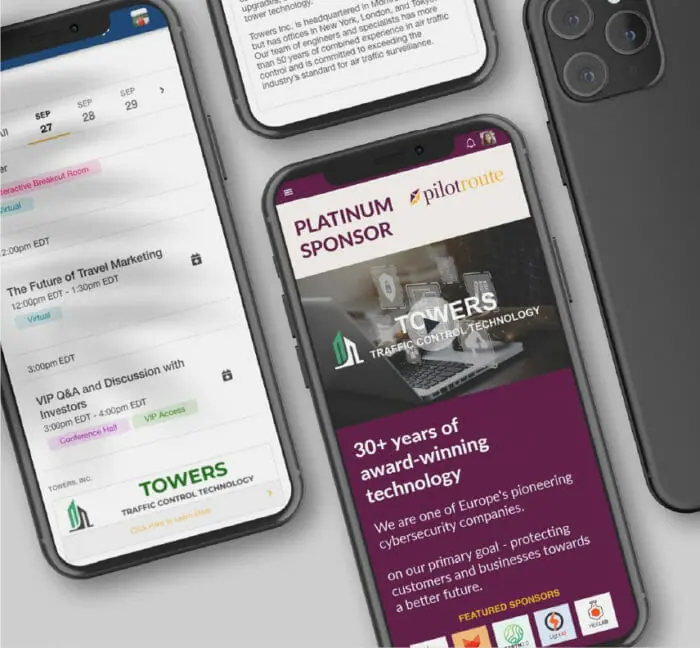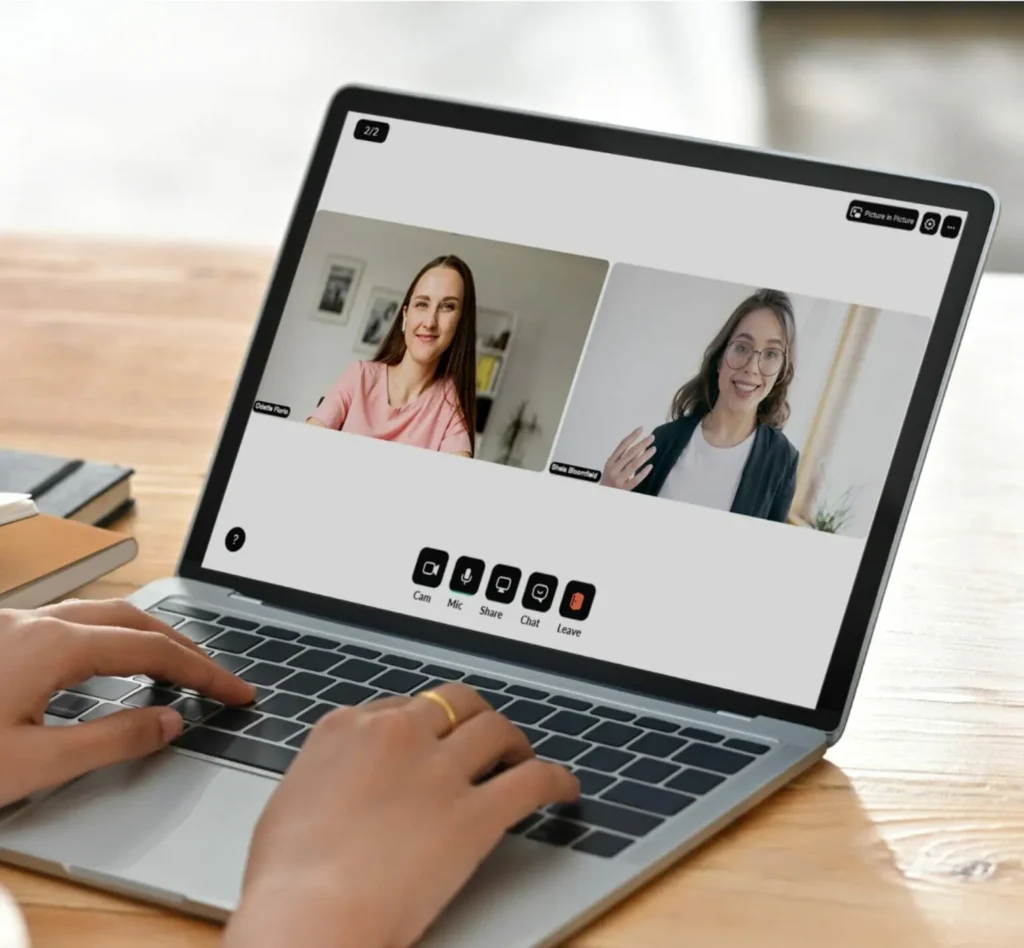How to Design Event Sponsorship Packages Too Good to Pass Up

Thorben Grosser serves as VP of Partnerships and Channel at EventMobi, bringing 15+ years of expertise in strategic event planning and industry leadership. Having guided thousands of event professionals in crafting exceptional attendee experiences, Thorben deeply understands the nuanced challenges planners face in delivering successful events. In his current role, he collaborates with event agencies and AMCs to enhance their strategic capabilities while sharing practical insights on emerging trends and best practices.
Did you know that event sponsorship drives brand engagement for a whopping 98% of consumers? When you’re looking to lock in the right sponsors, a great event sponsorship package greases the wheels and makes signing easy. That way, you can engage your attendees and produce a high return on investment (ROI) for both your sponsors and your own organization.
Before you partner with businesses to make your event a success, your sponsors should know who you are, why your event matters to them, what’s in it for them, and how they can help—all from your event sponsorship packages.
What Are Event Sponsorship Packages?
Event sponsorship packages, or sponsor packs, are collections of marketing services and benefits offered by an event organizer to potential sponsors. They typically include various sponsorship tiers or levels, each with distinct benefits designed to attract sponsors of different sizes and budgets.
Use this pricing template to simplify the event sponsorship package design process.
How to Create Event Sponsorship Packages
Sponsors have always been a crucial source of revenue for events. However, with so much competition for attendee attention, it’s crucial to show that you’re offering competitive and valuable in-person, virtual, and hybrid event sponsorship package options.
To start, think like a sponsor! That means considering what goals your event sponsors might be hoping to achieve by supporting your event, including:
- Spreading the word about a new product launch
- Reaching out to a new target audience
- Increasing brand awareness with an existing audience
- Building relationships and engaging with a relevant community
- Repositioning a brand that has become stagnant
- Aligning a brand with corporate social responsibility (CSR) initiatives
An event sponsorship package is essentially your “pitch” on why potential sponsors should choose your event over other events or channels in which they could invest their budget. It’s critical to understand the goals of any existing and potential new sponsors so you can align your packages with those objectives.
Now more than ever, sponsors are looking for customized event sponsorship packages with the best ROI possible. No matter their more specific event goals, most sponsors are looking to unlock two main benefits from your partnership:
- The ability to establish connections with attendees
- Opportunities for maximum brand exposure
Considering these benefits, you’ll want to offer as many opportunities as possible for direct interactions between sponsor representatives and attendees. You’ll also need to provide sponsors with high-visibility opportunities to incorporate their brand messaging into your event content wherever possible.
If you address all of these needs in your event sponsorship package offerings, you’ll be guaranteed to yield excellent event revenues and loyal sponsors who return year after year.
What Should a Sponsorship Package Include?
There are many options when it comes to building a sponsor pack! To help guide your decision-making, you could follow one of two models:
- Tiered Sponsorship Model. This is the traditional approach where a variety of features are included in the event sponsorship package offerings, depending on the sponsorship level.
- À La Carte Sponsorship Model. This approach is commonly used to serve sponsors with specific needs or goals—being able to customize their event sponsorship package is essential to win their support.
Regardless of your model, all event sponsorship packages should include:
- Information about your organization, including values, mission, and goals
- Information about the event, like programming schedule, date, and expected attendance
- The sponsorship details, including benefits, expected ROI, and pricing
- Examples of sponsorship packages or sponsor results from previous events
- Visual elements that tie all of the information together
Starting with those points, you can then decide whether to use a tiered model or à la carte. We’ll review these different approaches in greater depth in the following sections.
How to Set Up Sponsorship Packages Using the Tiered Model
A tiered sponsorship model has a clear structure to follow. When you’re creating your sponsor deck, you can easily present the tiers in ascending order, from least to most expensive.
Here is a step-by-step breakdown of how to build a tiered sponsorship model (that includes event technology features!):
Step 1: Create sponsorship levels.
Common sponsorship tier labels include Platinum, Gold, Silver, and Exhibitor, but you have lots of creative freedom to name the levels so that they fit your event theme or brand. Use your sponsorship levels to make your event seem fun and appealing to sponsors!
Remember that both your in-person event app and virtual event space provide plenty of opportunities for visual cues to signal sponsorship levels. When creating your tier levels, it’s a good idea to think about what sorts of badges or ribbons you can use to highlight each level of sponsorship. For instance, your event agenda may list the sponsors with a different colored star corresponding to each company’s tier level.
Tiered sponsorship packages allow sponsors to choose a level that best fits their budget and goals. Remember to include a range of options for both large and small sponsors! As you assign your sponsorship levels, be mindful to offer increasing value with each tier.
Step 2: Decide quantities per tier.
The next step is to determine how many event sponsorship packages of each tier level you need to sell to achieve your event revenue goals.
The more limited the quantity, the more you can charge for the sponsorship package. This exclusivity will also encourage sponsors to commit earlier so you’re able to better predict your revenue and plan your event.
The same principle applies to sponsor tier features—especially high-value offerings like prime scheduling slots for branded content.
When it comes to virtual events, your most popular sessions are equivalent to the trade show floor space that draws the highest foot traffic. If only your top sponsors are allowed to contribute to a keynote panel discussion, for example, exhibitors will rush to claim your premium event sponsorship packages!
Step 3: Distribute sponsorship benefits per tier.
The higher and more exclusive the tier, the greater the number of high-value benefits. Rank your benefits by value, and add increasingly more benefits as the tiers ascend. This step will allow sponsors to choose the tier that works best for them, increasing your overall opportunities for sponsorship.
To offer additional value, go beyond the standard tiers by offering custom sponsorship opportunities. Tailored packages may include sponsored networking events, VIP experiences, or opportunities for sponsors to provide educational content.
Ideas for À La Carte Sponsorship Packages
The à la carte sponsorship model is an alternative model for sponsors seeking to achieve specific goals or outcomes, such as attendee engagement or brand exposure. Consider structuring your à la carte sponsorship offerings based on the event’s lifecycle stages, like this:
Pre-event sponsorship options
Involve your sponsors in your marketing communications to build excitement before your event! Promote your sponsor using:

- Logos. Include the sponsor’s logo on your event registration page and any marketing communications promoting the event, such as registration invite emails.
- Social media. Post social media shout-outs to thank and promote sponsors ahead of your event. Make sure your attendees know which event features are made possible thanks to each sponsor!
- Speakers. Highlight your sponsors’ speakers! Building hype encourages session attendance on the day of your event.
- Giveaways. Everybody loves a prize! Your sponsored giveaways can help promote registration and build excitement for the event. For a virtual event, you can always mail physical prizes to online participants together with swag bags—or they can be rewarded through digital coupons, gift certificates, and discounts.
Highlight sponsors during the event
There are so many ways to promote your sponsors during your event! Try these methods to heighten your sponsors’ visibility:

- Banner ads. Use an event sponsor banner to highlight top-tier sponsors on the mobile event app and virtual event space home screen. It’ll be the first thing every attendee sees! You may also offer sponsors the option to hang a physical banner at your venue.
- Directions. Incorporate the sponsor’s logo into the show design by creating floor tiles for high-value sponsors with arrows pointing toward their stand. Then attendees will know exactly where to go!
- Sponsor profiles. Create dedicated sponsor profiles where you can feature the sponsor’s logo and information on your event app and virtual event platform.
- Signage. Place the sponsor’s logo on any printed and/or digital marketing materials or signage displayed in the event registration area or venue.
- Alerts. Send targeted alerts or push notifications with the sponsor’s logo included.
- Live polls. Running live polls during your event? Try highlighting the sponsor’s logo on the results window.
- Resources. Your event attendees are itching to learn more, and your sponsors have the info! Include links to downloadable resources provided by the sponsor, such as brochures or product collateral.

- Gamification. Structure your challenges so that attendees need to visit sponsors’ exhibitor booths (either physically or online) to collect codes. Award extra points and prizes for more in-depth interactions with sponsors.
- Appointment booking. Enable sponsors to connect with attendees via sponsored group discussions, private chats, and 1:1 meetings. Bookings are easy when they’re built into your event app!
- Exclusive sessions. Help sponsors create a more personal connection with attendees by hosting breakout sessions for targeted groups, either on-site or in interactive breakout rooms online.
Post-event opportunities for sponsors
Although your event may be over, there are still ways to promote your sponsors. Experiment with these post-event sponsor opportunities:
- Follow-up communication. You’ll be emailing your attendees with post-event surveys and other information, so why not include the sponsor’s logo and mention them in your message?
- Volunteer thank you party. If you have volunteers, your sponsors could fund a post-event get-together where you show your appreciation for their time.
- Video library. Incorporate sponsor content into an ongoing library of on-demand video content. You could embed links to their virtual booth or website and then add contact information in the session description.
Event Sponsorship Examples
Now that you know what goes into the two main types of event sponsorship packages, how do you put one together so you can start promoting it? You can try out both models (and even see examples!) by downloading these free templates:
Level Up Your Sponsorship Packages with Event Tech
When curating irresistible event sponsorship packages, offering unexpected value can help attract and build relationships with your ideal event sponsors.
One of the simplest ways to do this? Using the latest event tech to build impactful packages that sponsors can’t resist! Here are a few ideas to get you started:
- Offer virtual and hybrid event sponsorships. With virtual and hybrid events and event spaces, sponsor visibility can go digital! Consider benefits like sponsored sessions, digital banners, or branded virtual lounges.
- Leverage tech to connect. Use event technology to provide unique opportunities for sponsor engagement and visibility. Send push notifications in a mobile event app, leverage sponsored polls during sessions, or gamification features that drive attendees to the sponsor’s virtual or physical booths.
- Measure and share analytics. Sponsors want to see the return on their investment. Event technology makes it easy to track and share detailed analytics, which allows you to provide sponsors with tangible insights into their impact and reach.
If you’re looking for an event platform that can support your sponsorship strategy at every step of your event journey, EventMobi offers all of the above and more! Using EventMobi’s hybrid events platform, you can implement your digital event sponsorship offers and provide in-person support to your sponsors, with the post-event analytics to match.

Watch the EventMobi Product Tour to see how to increase sponsor engagement at every stage of your events and ensure exhibitor ROI with a lightning-fast Lead Capture App.
How to Find the Right Event Sponsors
Equipped with top-tier event sponsorship packages, it’s time to go out and find your sponsors! Keep the following tips in mind to find sponsors that are right for your event and organization.
- Look for sponsors that align with your event’s theme, audience, and values. For example, if you’re organizing a tech conference, tech companies might be interested in your event sponsorship packages.
- Research each potential sponsor thoroughly. Understand their objectives, their target audience, and what they usually sponsor. It may also be beneficial to review their past sponsorships, their presence on social media, and any recent news about them to get an idea of their interests and reputation.
- Personalize communication. When you approach potential sponsors, make your message about them and how the sponsorship packages for your event can benefit them. Show how your event aligns with their goals and can offer valuable exposure to their target demographic.
How to Pitch Event Sponsorship Packages
Pitching your event sponsorship package effectively is crucial for securing sponsorships. Here are the steps to ensure a successful pitch:
- Prepare a compelling sponsorship deck. A sponsorship deck, or sponsorship packet, is a presentation that highlights the benefits sponsors will receive from partnering with your event. It should include information about the event, audience demographics, sponsorship tiers, benefits of each tier, pricing, and examples of sponsorship packages from previous events.
- Tailor your pitch. Customize your pitch to reflect each potential sponsor’s goals so you can show them exactly how your event will help achieve their objectives.
- Highlight benefits. Clearly outline what’s included in each sponsorship tier. This could range from logo placement on promotional materials to booth space at the event to speaking opportunities to social media mentions.
- Provide a clear call to action. Make it easy for potential sponsors to take the next step. This could be a meeting to discuss the event sponsorship packages in detail, a link to a registration form, or contact information for further inquiries.
Remember to follow up after your pitch, thank the potential sponsor for their time, and be prepared to negotiate the details of the sponsorship package.
Also, consider offering digital event sponsorship packages for sponsors who wish to reach out to your online audience! This can be especially useful if you run a year-round event space, so sponsor engagement isn’t tied to specific events—just to how engaged your community is.
Next Steps: Designing Your Event Sponsorship Packages
By now, you should be well-equipped with the best strategies and tips to take your event sponsorship game to the next level. You know how to approach potential sponsors with the right pitch and create compelling, customizable event sponsorship packages that cater to their unique marketing objectives.
Remember that the secret to crafting an attractive sponsorship package lies in alignment—aligning the sponsor’s goals with the benefits you offer. Whether it’s through brand exposure, audience engagement, or valuable networking opportunities, ensuring your sponsors find the value they’re seeking is paramount.
With the rise of virtual and hybrid events, event tech has become a mainstay of the event industry—especially since in-person attendees at hybrid events rely on event apps to stay engaged and informed. As you may have noticed from the list of à la carte sponsor features above, many sponsor benefits apply equally to the in-person mobile event app as to the virtual event platform.
With the best event sponsorship packages at your disposal, you’re poised to form strong and enduring relationships with sponsors. These partnerships will not only provide critical support for your current event but pave the way for ongoing collaboration, bolstering your organization’s events now and in the future.
Want to learn more about increasing your event’s sponsorship opportunities? Check out these resources:
- 66 Creative Event Sponsorship Ideas to Help You Secure Your Ideal Sponsors. Not sure what to include in your event sponsorship packages? This article will equip you with a wide variety of ideas so you can secure your ideal sponsors.
- How to Create Sponsorship Levels & Lock in Sponsors [Examples!] For more in-depth information about how to create sponsorship tiers, check out this resource.
- 3 Ways to Attract Sponsors and Exhibitors for Your Next Event. Half the battle is finding and attracting sponsors that align with your event and your organization. Test out these three ways to attract sponsors and exhibitors.

Book your demo of EventMobi today to see how you can use a single, powerful platform to increase sponsor engagement and ensure Exhibitor ROI.